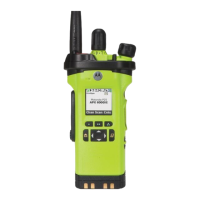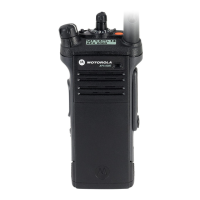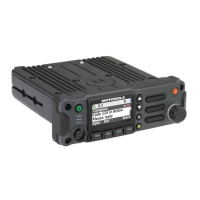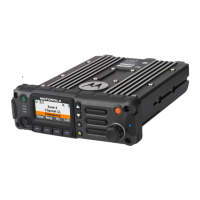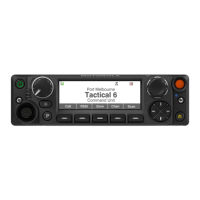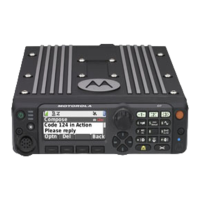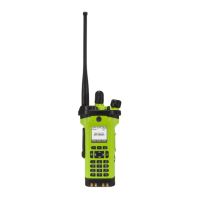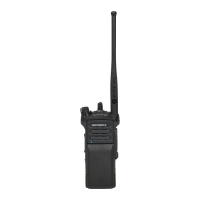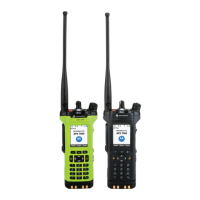Basic Theory of Operation: Controller Section 3-11
Figure 3-12. GPS/Bluetooth/Accelerometer Block Diagram
3.4.1 Radio with Mace Expanded Keypad Board
In addition to the Mace features, the Expanded Keypad Board consists of a 3-axes digital
accelerometer and the Bluetooth Controller IC (AVR) together with LF Wakeup IC (AS3930A) for
Secure Pairing.
The radio also has the ability to connect to a wireless Bluetooth audio headset. This feature is
implemented using a combination Bluetooth/GPS integrated circuit (NL5500 IC) located on the Main
board. An optional accessory headset can connect using a low-data rate GFSK modulated signal
hopping on 79 x 1 MHz wide Bluetooth channels from 2402 MHz to 2480 MHz in the ISM band. Each
APX accessory that is capable of Bluetooth communication will have its own unique Bluetooth
address. Bluetooth uses a frequency hopping spread spectrum (FHSS) technique to spread the RF
power across the spectrum to reduce the interference and spectral power density. The frequency
hopping allows the channel to change up to 1600 times a second (625 μs time slot) based on a
pseudo random sequence. If a packet is not received on one channel, the packet will be
retransmitted on another channel. The Bluetooth IC sends data to the AVR32 processor that is also
located on the keypad board over an HCI UART link. The AVR32 processor communicates to the
OMAP processor on the main board through a dedicated USB port.
The Bluetooth feature is accompanied by a Low-Frequency (LF) detection circuit that is also located
on the keypad board. The LF circuit provides the ability of a secure pairing connection with a
Bluetooth accessory. Once a radio has the Bluetooth feature enabled, a user can tap their LF
enabled Bluetooth audio accessory with the radio at the pairing spot to establish a secure Bluetooth
connection. The LF circuit uses a 125 kHz radiated signal to communicate the secure pairing
information between the Bluetooth accessory and low-frequency receiver. The low-frequency
receiver is programmed by the AVR32 processor through a dedicated SPI bus and transfers the
pairing data through a dedicated UART.
There is a digital accelerometer on the keypad board that detects the 3-axis force of gravity which
can be used to determine the radio's orientation. The accelerometer's position is communicated to
the AVR32 processor through a SPI bus.
GPS+Bluetooth
Combo Chipset
NL5500
ATMEL AVR32
AT32UC3A0512
64kB SRAM
512kB Flash
OMAP 1710
32kHz
from CPLD
26MHz
TCXO
12MHz
XTAL
Accelero-
meter
128MB
SDRAM
GPS SAW
filters &
LNA
BT
Filter
BT Antenna
UART (GPS Tx/Rx) // 2
SSI (BT Audio) // 4
USB // 2
UART (BT HCI) // 4
GPS/RF Antenna
GPS/RF
Diplexer
// 1
// 1
// 6
// 38
BT Control // 3
GPS_Shutdown // 1
Misc Control // 7
LF IC
// 1
Keypad Board
LF Antenna (located on flex)
Main Board
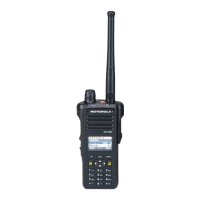
